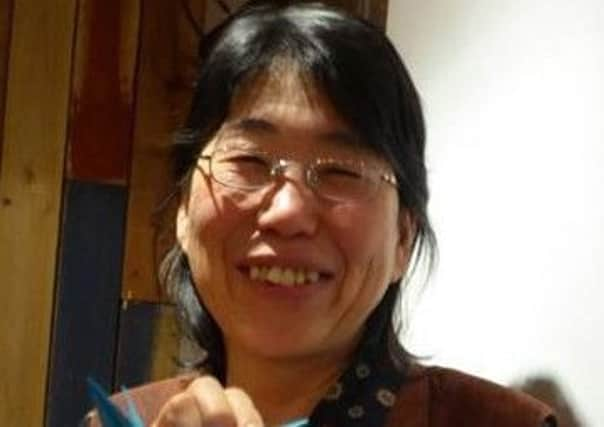Obituary: Atsuko Betchaku, teacher and pacifist


In the lexicon of war Hiroshima has only one equal – Nagasaki. Although scores of other Japanese cities had already been laid to waste, firebombed in conventional air raids during the spring and summer of 1945, that August these two strategic ports were targeted in the first and only instances of nuclear weapons being used in the history of warfare.
As a youngster growing up in Japan less than 20 years later, Atsuko Betchaku would have had the knowledge of the devastating effects on her homeland ingrained in her psyche. And as a teenager she visited Nagasaki where the atomic bomb was estimated to have killed 40,000 and injured a further 60,000. At Hiroshima, the bomb, dropped three days earlier, was estimated to have claimed 140,000 lives by the end of 1945. The blasts resulted in Japan’s surrender and the end of the Second World War.
Advertisement
Hide AdAdvertisement
Hide AdBut it was not until after arriving in Scotland, and four decades following her Nagasaki visit, that she was compelled to launch a poignant project commemorating each one of those Hiroshima victims and illustrating her own desire for peace and nuclear disarmament.
She originally came here intending to stay for just a year to study English at the University of Edinburgh. But she was so enamoured with the country she gave up a teaching career in Japan and remained in the Scottish capital for 18 years, latterly initiating the 140,000 Origami Cranes Project. The venture aims to make 140,000 paper cranes – the birds are a symbol of peace – and she hoped to mount an exhibition at the Scottish Parliament next year.
Her inspiration was the story of a young girl, Sadako Sasaki who was exposed to the atomic bomb when she was just two years old. Although seemingly healthy, nine years later she was diagnosed with leukaemia but, during her time in Hiroshima Red Cross Hospital, believed that folding paper cranes would help her recover. She is said to have heard of a legend that anyone who folded 1,000 paper cranes would have their wish granted. Though Sadako faithfully continued to make the origami birds throughout her illness, she died in October 1955, a decade after the bombings.
Her death was the catalyst for the Children’s Peace Monument that stands in Hiroshima’s Peace Memorial Park and her story, now known worldwide, prompted a global phenomenon that sees approximately 10 million cranes offered at the memorial each year.
Explaining her project, now run through Edinburgh’s Peace and Justice Centre, Atsuko described visiting Nagasaki on a school trip and discovering the stories of the city’s atomic bomb victims. “My feeling was simply against war and no more Nagasaki and Hiroshima. After that I gradually learnt Japanese armies committed atrocities in other parts of Asia during the Second World War.
“I also met people who congratulated the atomic bombs dropped in Japan. Wars divide people and Japanese were dehumanised. Without dehumanisation, such a devastating bomb would not have been utilised.”
Atsuko was born in the Kouchi Prefecture on Shikoku, the smallest of Japan’s main islands, in 1960, to parents Misao and her husband Toshio Betchaku, a civil engineer.
She attended Kochi University where she graduated from the primary school teacher training course in 1982, a qualification she followed with an MA in Education from the University of Tokyo in 1991. For the next five years she was a part-time teacher at Air University and an associate professor on the teacher training course, Kochi Junior College, in Japan before heading to Scotland.
Advertisement
Hide AdAdvertisement
Hide AdAfter falling in love with the country she quit her teaching career back home and decided to study the History of Education as a PhD student at Edinburgh University. During her studies she was also a part-time tutor in Japanese History at the university. After being awarded her PhD in 2006 her academic life continued as she embarked on a post-graduate course in Advanced Academic Studies at Strathclyde University.
Her involvement in the community extended to a range of volunteer activities. She was a founder and treasurer of The Day After The Tsunami committee, raising cash for those affected by the 2011 disaster that hit areas including Fukushima, in particular organising fundraising performances of the Japanese Singing Society, of which she was member. She was also involved in the Edinburgh Film Festival and Save The Children Japan.
Her profound concern about the atomic bombing of Hiroshima led to her organising film and discussion evenings featuring Year X, a documentary exploring the impact of the atmospheric testing of nuclear weapons on the Marshall islanders of the Pacific, and the film White Light/Black Rain about the destruction of Hiroshima.
Atsuko, a vegan, supermarket worker and keen walker, was also an amateur artist, exhibiting some of her artwork, focusing on Hiroshima, at Colinton Parish Church. And in 2014 she gave a reading of Japanese poems, relating to the atomic bomb, at the Just Festival, part of the Edinburgh Festival Fringe.
She ran many origami cranes workshops at the Peace and Justice Centre, in libraries and community centres and organised an exhibition of the paper birds at Stockbridge Library last summer.
Paying tribute, the Peace and Justice Centre said: “Atsuko was a delightful, joyful person who created beauty and touched the lives of many people through her many and varied voluntary activities… there was always much laughter and happiness as she showed people how to fold the origami peace cranes.”
She is survived by her mother, Misao and her brother Yuji.
ALISON SHAW